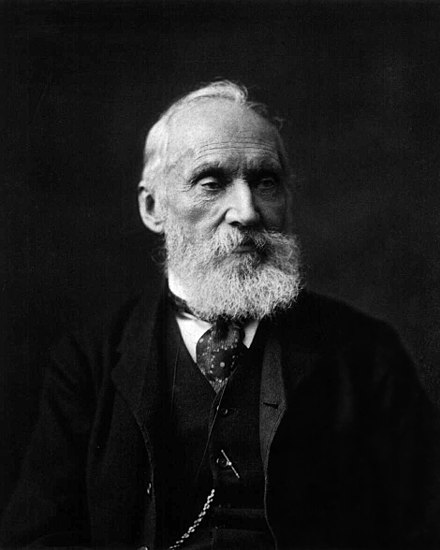A traditional understanding, the one that I have embraced as true, concerns the grossly incorrect calculations made by Lord Kelvin regarding the age of the earth. It turns out that the story commonly told to explain why he got it so very wrong is a complete myth and not true at all.
First the story
You will find it within many reputable sources, but for simplicity, let’s turn to his Wikipedia Page as a reference.
Kelvin calculated the age of the earth, initially to be between 20 and 400 million years, then several decades later, once he had better numbers to plug into his calculations, settled for 20-40 million years old. This was very much at odds with the geologists at that time. They had clear geological evidence for a far older age, a time span that ran to billions of years. This conflict between Kelvin and the Geologists was very public.
What Kelvin had done was in theory quite sound. He used the rate of heat loss from the planets surface to derive the age. Initially he did not know what the geothermal gradient might be, hence his initial 20-400 million year span. Once reliable geothermal gradient measurements had been made, he was later able to refine it down to 20-40 million years old.
Behind his calculations was some basic physics – energy is conserved. To calculate the age, he used three assumptions…
- Earth is rigid and solid
- The physical properties of Earth are homogeneous
- There was no undiscovered source of energy
What we all now appreciate is that the missing bit of the puzzle was that his third option was wrong – radioactivity had not yet been discovered.
The Myth and the real Truth
Now here comes the kicker. That last bit is wrong.
Even if he had known about radioactivity and had considered it as a heat source, he would still have calculated an age that was far too young.
The real problem, his true undoing, is that it was one of his other assumptions that was seriously flawed.
Having stuck the metaphorical knife into his back, let’s now give it a twist.
One of Lord Kelvin’s assistants, a very smart chap named John Perry, pointed out to Kelvin exactly why his calculation was wrong. An article here explains what happened …
Perry discovered the flaw in Kelvin’s argument in 1894 but, reluctant to embarrass his patron, tried first to convince Kelvin face to face and by private correspondence. He was brushed off, either because Kelvin did not understand Perry’s approach or because he was not interested. In 1895, therefore, Perry decided to go public
The fundamental problem was that Kelvin’s first assumption was wrong, the Earth was not rigid and solid. We have a thin mantel with a liquid under that.
Perry’s calculation shows that if the Earth has a conducting lid of 50 kilometers’ thickness, with a perfectly convecting fluid underneath, then the measured thermal gradients near the surface are consistent with any age up to 2 billion or 3 billion years. That aligned a lot more closely with what the geological evidence was telling them.
Note: No radioactivity, just the same calculations with an appropriately adjusted assumption.
Where did the Modern Radioactivity Myth come from?
Ernest Rutherford was giving a talk on the topic in 1904 and describes it like this …
I came into the room, which was half dark, and presently spotted Lord Kelvin in the audience and realized that I was in for trouble at the last part of the speech dealing with the age of the earth, where my views conflicted with his. To my relief he fell fast asleep but as I came to the important point, I saw the old bird sit up, open an eye and cock a baleful glance at me! Then sudden inspiration came, and I said Lord Kelvin had limited the age of the earth, provided no new source of heat was discovered. That prophetic utterance refers to what we are now considering tonight, radium! Behold! The old boy beamed at me.
Rutherford gave him an easy escape that did not reveal that Kelvin had catastrophically screwed up and then refused to be corrected. This explanation, the story that he got the calculation wrong because of an undiscovered source of energy, became the established mythology.
It thrived and became established, perhaps because it is a great story and Rutherford was rather fond of telling it, so he often repeated it.
Lord Kelvin is a hugely important figure who made some amazing contributions. For example, the formulation of the first and second laws of thermodynamics is his. The point is this; he might indeed have a robust and well-established legacy of truly meaningful contributions to our understanding of things, but he was also capable of making mistakes. We all are, no matter how smart we are, no exceptions.
Further Reading
- American Scientist : Kelvin, Perry and the Age of the Earth
